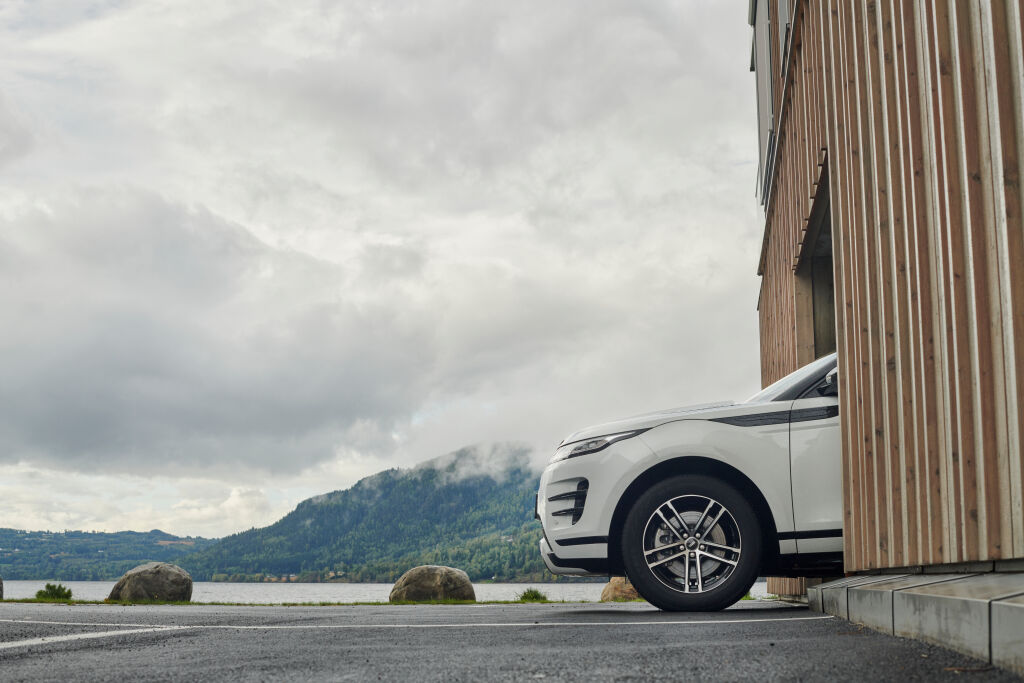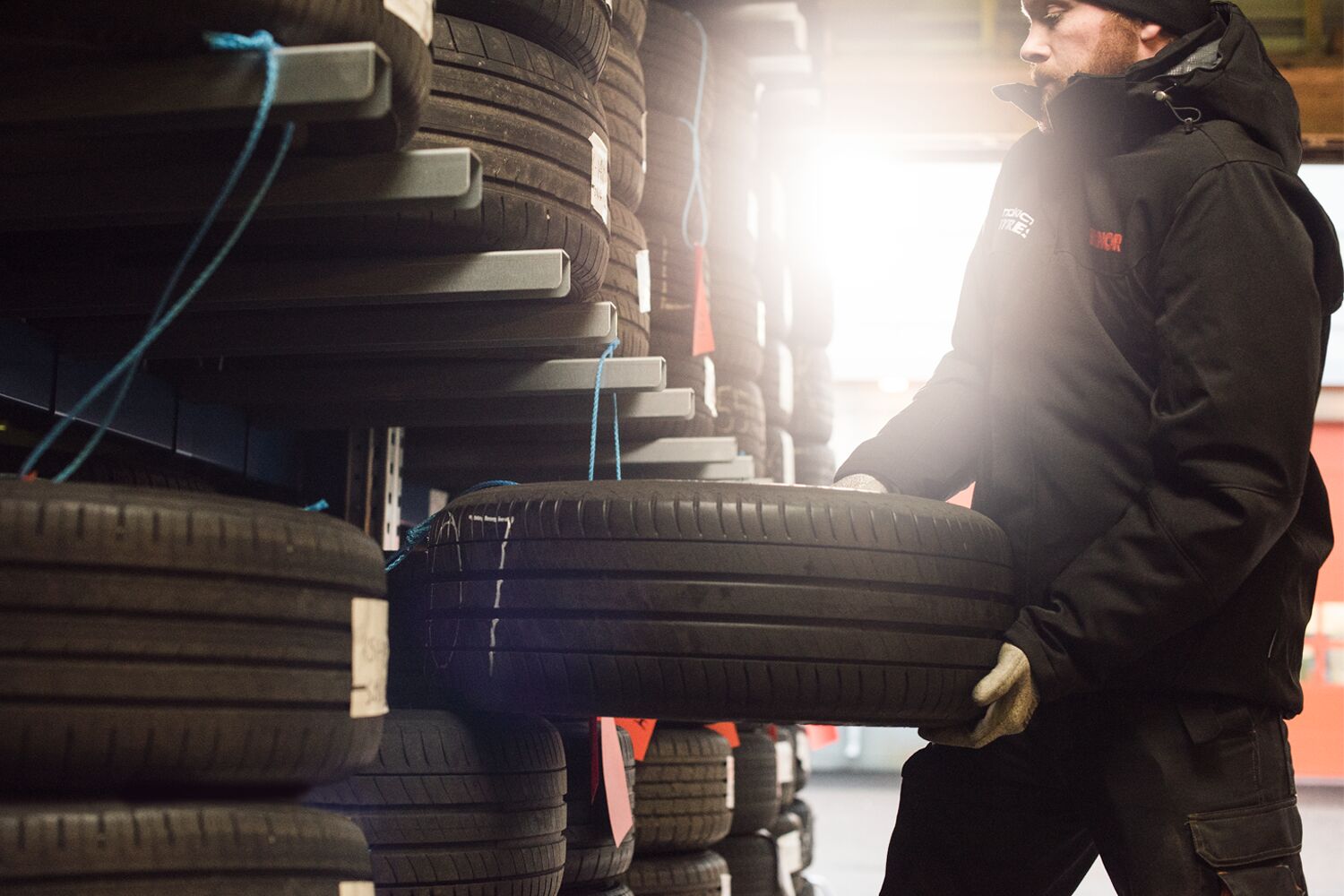
Learn how you can extend the lifespan of your tires with proper tire storage. Help your tires perform optimally year-round by implementing safe methods for tire storage.
Whether you are switching to all season tires or winter tires, it's important to store the off-season set of tires properly. With the right tire storage methods, you can preserve the integrity of your tires and prevent alterations in the tires' rubber compound during the storage period. Proper tire storage helps extend your tire’s lifespan and helps ensure your tires perform optimally year-round.
Optimal tire storage
Some areas may have shops that offer local tire storage services, or you can store your tires in your garage or storeroom. When opting for home storage, there are various factors to consider.
Temperature
Extreme temperatures can lead to changes in tires’ rubber compounds. The storeroom temperature should be below 77ºF (+25 ºC), maximum. Ideally, it should be dark and cool - below 60ºF (+15 ºC). If the temperature is extreme, meaning above 77ºF (25 ºC) or below 32ºF (0 ºC), the properties of rubber may change and therefore affect the service life of the tire. Cool storage does not have any adverse effect on rubber products.
Humidity
Humid conditions should be avoided. Humidity in the storeroom air should less than the level where condensation would occur on the tires. Tires should be stored in areas where they can be safe from (not exposed to) rain, splashes of water, etc.
If tires are left in humid conditions for long periods, the rubber compound may deteriorate more quickly. Moreover, extreme humidity can contribute to the corrosion of metal components of the tire.
Light
Tires should be stored where they are protected from light, particularly from direct sunlight and intense artificial light with a high ultraviolet content. Strong UV radiation can cause the rubber to become brittle and less flexible. These changes in the rubber compound can lead to cracks, dry rots, and other forms of damage. Storing tires away from sunlight and UV radiation helps extend the tires’ lifespan.

Oxygen and ozone
Ozone has a very strong deteriorating effect on tires. The storeroom should not contain any ozone-producing equipment, such as fluorescent lamps or mercury vapor lamps, high-voltage electrical equipment, electric motors, or any other electrical equipment that may generate sparks or silent electric discharges.
Deformation
If possible, tires should be stored freely in their natural form, so that they are not under stress, pressure, or torsion. Deformities developed during long-term storage may break when pressurized.
Tire racks help distribute the tire’s weight evenly, minimizing the risk of deformation. Tire racks can also help maximize storage space. If you store tires horizontally, it is a good idea to use tire dividers to create a space between them.
Solvents, oils, greases, heat
Tires should be stored in an area that protects them from any contact with solvents, oils or greases, however short-term. The storeroom should also protect the tires from powerful emitters of light and spatter from electric welding.
Tire handling
When handling tires in storage, try not to drop tires higher than 5 ft (~1,5 m). Dropping a tire from this height can cause a kinked bead. If your tire has a kinked bead, we do not recommend mounting it to a rim.
It's good practice to clean dirty tires before storing them. Dirt left on the tire’s surface may promote corrosion, degrading the rubber compounds over time. Dirty tires are also more prone to mold and mildew growth. By cleaning tires before storing them, you can enhance your tires' longevity.
Monitor tire condition after tire storage
Proper tire storage plays an important role in maintaining tires. Remember to conduct a tire inspection when you remove your tires from storage, and check that the tires look to be in good condition - remember that experts at your local tire shop can provide a professional opinion. Here’s a checklist for a tire inspection:
- Tire wear. Tire wear should be consistent all over the surface of your tires. If you see any uneven tire wear patterns, try to identify the cause of the pattern and ensure you are rotating your tires regularly.
- Tire pressure. Check that tire pressure is at the level recommended in your vehicle’s owner's manual (or on the sticker in the door-jam of your driver's side door).
- Tire tread depth. Measure your tire's tread depth using the penny test. With Nokian Tyres products, you can inspect tire tread depth easily by checking the Driving Safety Indicator (DSI) tool located on the tires’ surface.
- Visible damages. Look for any cracks, cuts, bulges, or other damage on your tires. A visible check is easier to do when your tires are clean.
Promote safe driving by utilizing proper tire storage techniques and inspecting your tires' condition after storage. When your tires are worn out or have visible damage, it's time to replace your tires. Contact your local Nokian Tyres dealer for more information and tire recommendations.
Please remember that it is the driver’s responsibility to ensure their tires are safe and suitable for their vehicle and to follow the vehicle’s manufacturer´s guidelines for proper use and maintenance. Consult your closest Nokian Tyres dealer or your vehicle’s manufacturer for specific advice.


